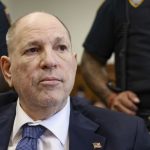The current Head of State and her predecessor are making two high-profile political and symbolic trips these days. Beijing threatens a “resolute” response if Tsai meets leaders in Washington. Ma exalts the figure of Sun Yat-sen, founder of the Republic of China, to promote peace between the two parties: the Chinese censure him.
Taipei () – Taiwanese President Tsai Ing-wen and her predecessor Ma Ying-jeou seem like a long-distance challenge. Tsai, leader of the Democratic Progressive Party (PDP) that communist China rejects as a pro-independence force, arrived in the United States yesterday. He will remain in New York until April 1, a stopover prior to his visit to Guatemala and Belize. After the recent break with Honduras, which chose to recognize Beijing, the two Central American countries are among the last 13 diplomatic allies Taipei has left.
For his part, Ma is in China: a controversial tour, about which the former Taiwanese Head of State repeatedly said that it was not official. However, several observers claim that the Chinese want to use their party (the nationalist, pro-Beijing Kuomintang) to divide Taiwanese society ahead of the 2024 presidential election, in the hope of weakening the PDP.
Tsai had not been to the United States since 2019. Her North American stopover comes at a time of heightened tension between Washington and Beijing, and increasing Chinese military pressure across the Taiwan Strait.
On April 5, before returning to her country, Tsai is scheduled to meet with the Speaker of the US House of Representatives, Republican Kevin McCarthy, in Los Angeles. The Chinese Office in charge of Taiwan affairs has threatened a “resolute” response if the two meet.
In August, after McCarthy’s predecessor Nancy Pelosi visited Taipei, the Chinese responded with a prolonged series of military exercises. Beijing regards the island as a “rebel” province that must be reconquered even by force.
For its part, under the Taiwan Relations Act, the United States pledged to defend the island. The act, adopted in 1979 after communist China’s formal diplomatic recognition, does not specify the actual nature of Washington’s commitment to Taipei: a “strategic ambiguity” that produces ongoing tensions with Beijing.
In his visit to Nanjing on March 28, Ma urged Taipei and Beijing to seek peace and avoid conflict. He did so by praising the figure of Sun Yat-sen, founder of the Republic of China (ROC) in 1912. It should be remembered that Taiwan has been de facto independent from China since 1949; by then, Chiang Kai-shek’s nationalists found refuge there after losing the mainland’s civil war to the communists, making it the heir to the ROC.
Despite his “closeness” to the Kuomintang, the Chinese authorities censored a large part of Ma’s interventions: all those in which he referred to the ROC and his status as “former president of Taiwan”. This further fueled the PDP’s criticism of the former head of state’s trip to China.
“RED LANTERNS” IS THE NEWSLETTER ASIAN NEWS DEDICATED TO CHINA
WOULD YOU LIKE TO RECEIVE IT EVERY THURSDAY IN YOUR EMAIL? SUBSCRIBE TO THE NEWSLETTER AT THIS LINK.











